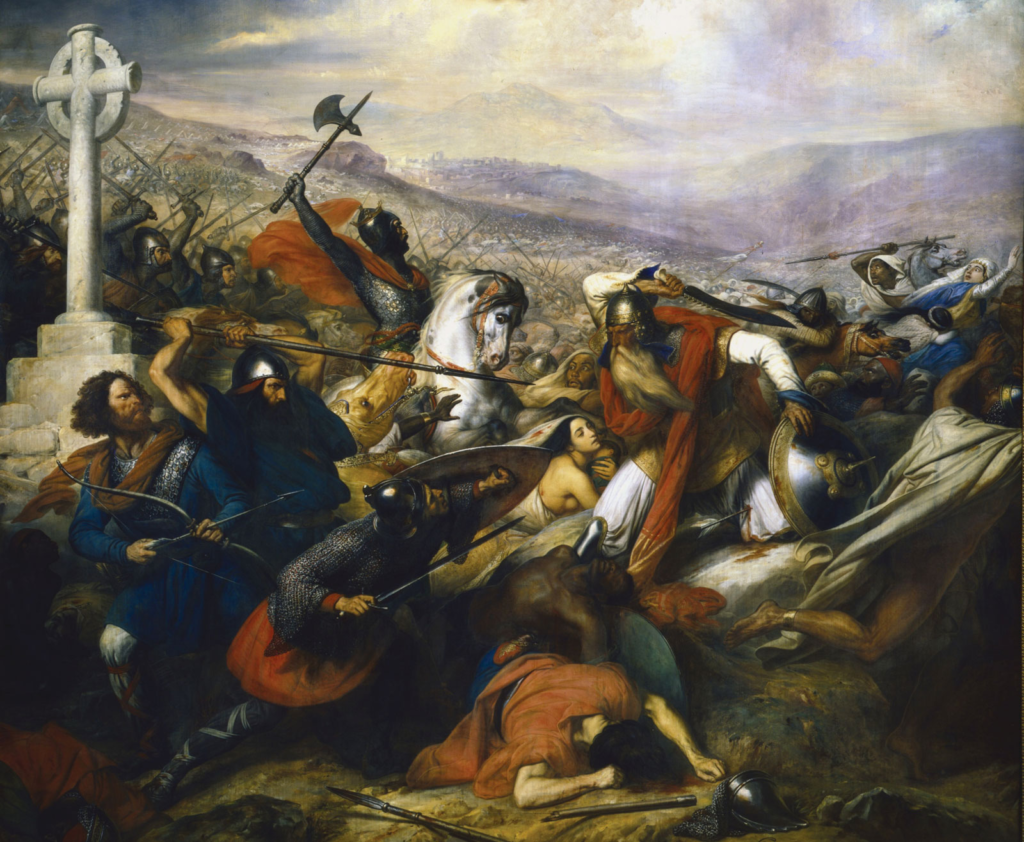732 Charles Martel drives back the Muslims from France
A victorious line of march had been prolonged above a thousand miles from the rock of Gibraltar to the banks of the Loire; the repetition of an equal space would have carried the Saracens to the confines of Poland and the Highlands of Scotland; the Rhine is not more impassable than the Nile or Euphrates, and the Arabian fleet might have sailed without a naval combat into the mouth of the Thames. Perhaps the interpretation of the Koran would now be taught in the schools of Oxford, and her pulpits might demonstrate to a circumcised people the sanctity and truth of the revelation of Muhammed.
This was the judgement of Charles Gibbons in his Decline and Fall of the Roman Empire when he considered the importance of the battle of Tours (aka Battle of Poitier) in 732, a battle that pitted the army of semi-civilized Christian Franks against the undefeated forces of Muslim Spain. The victory of warlord Charles “the Hammer” Martel repelled an Islamic incursion and marked the rollback of Muslim penetration into France and back over the Pyrenees.
Muslim armies had crossed over the Straits of Gibraltar in 711 and rapidly conquered the Visigothic kingdom in Spain, leaving only a remnant of Christian rule in the mountains of the northwest of the Iberian peninsula. They surged across the mountains and invaded the old Roman province of Aquitaine in southern Gaul where they occupied a number of cities and raided north into Burgundy. In 732 a large army, probably over 30,000 cavalrymen, led by Abdul Rahman Al Ghafiqi struck out toward the rich shrine of St Gregory at Tours. Their plan was plunder and destruction of the Frankish kingdom, then under the weak Merovingian dynasty.
The Frankish “mayor of the palace” (the brains behind the weak kings) was Charles Martel who gathered an army of Frankish fighters, spear, axe and shield men, who would meet the enemy on foot. The two armies clashed somewhere between what are now the cities of Tours and Poitiers. Charles arranged his men on high ground in an impregnable shield wall, impervious to cavalry, and waited for the Muslims, or Moors, to become impatient and charge too impetuously. That break came after at least three (perhaps seven) days of stand-off when the Moors launched their attack and were beaten with their general falling in battle. They fled south toward Spain, leaving their loot behind. In the following years Charles moved his army south and drove the Muslims back across the mountains in Spain.

Historians have debated the significance of the battle; many are not as sure as Gibbon that the 732 encounter was all that important. It is clear, however, that Charles’s victory led to his family’s ascending the throne of the Franks and the reign of his grandson Charlemagne who took the fight against the Moors into Spain itself.
The painting above is a massive (4.6 m [15.2 ft] x 5.4 m [17.7 ft]) 1837 depiction, less accurate than allegorical — note the stone cross, and the imperilled woman and child.